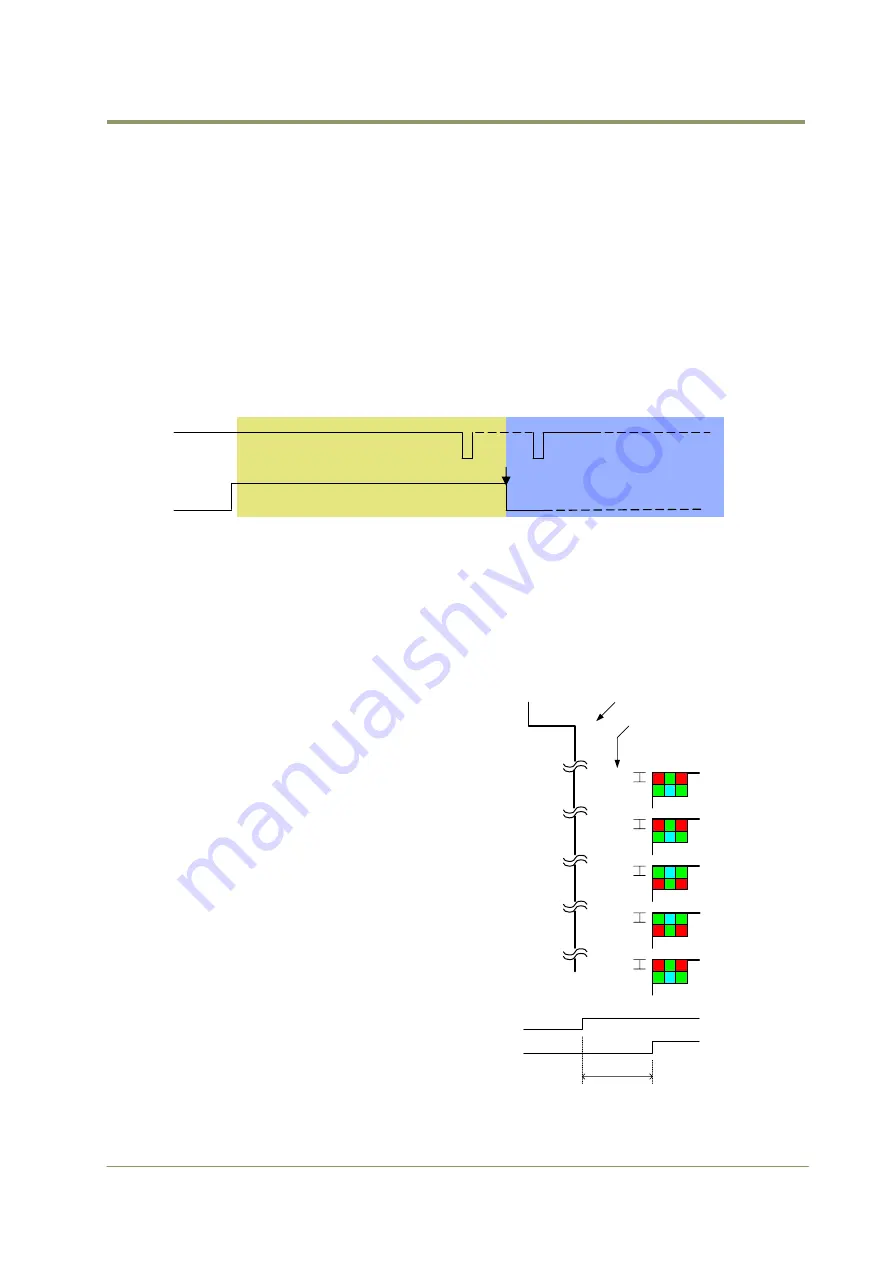
CM-200 MCL / CB-200 MCL
6.1.6.
Auto-detect LVAL–sync / - a-sync accumulation
This function replaces the manual setting found in current JAI cameras. Whether accumulation is
synchronous or a-synchronous in relationship to LVAL depends on the timing of the trigger input.
When a trigger is received while FVAL is high (during readout), the camera works in LVAL
synchronous mode , preventing reset feed through in the video signal. There is a maximum jitter
of one LVAL period from issuing a trigger and accumulation starts.
When trigger is received when FVAL is low, the camera works in LVAL a-synchronous mode ( No
delay ) mode.
This applies to both Pre-Select (PS) trigger and Pulse Width (PW) trigger modes.
Ext. trigger
FVAL
(1)
(3)
(1) In this period camera executes trigger at next LVAL (prevents feed-through noise)
(2) Avoid trigger at FVAL transition (+/- 1 LVAL period), as the function may randomly switch
between "next LVAL" and "immediate".
(3) In this period camera executes trigger immediately (no delay)
(2)
Fig. 9. Auto-detect LVAL sync /a-sync accumulation
6.1.7.
Starting pixel – Bayer color mosaic
CB-200MCL is a color camera based on a CCD
sensor with a Bayer RGB color mosaic. The color
image reconstruction is done in the host PC.
The Color sequence in the video signal
differs from full scanning to partial scanning. The
right hand drawing shows the color sequence at
the image start.
The start line number is shown from FVAL timing.
The start pixel is offset 17 pixels from LVAL when
DVAL rises.
Even lines starts with GBG.
Odd lines starts with RGR
See also chapter 6.3. Partial scan.
F
ig. 10. Bayer color mosaic
FVAL Timing
17
LVAL
DVAL
1
49
71
82
34
11
Full
2/3 Partial
1/2 Partial
1/4 Partial
1/8 Partial
G B
R G
G
R
G B
R G
G
R
G B
R G
G
R
G B
R G
G
R
1
Line # from FVAL
G B
R G
G
R
16 clock
310
1
464
541
207
Actual V Line #
- 9 –











































